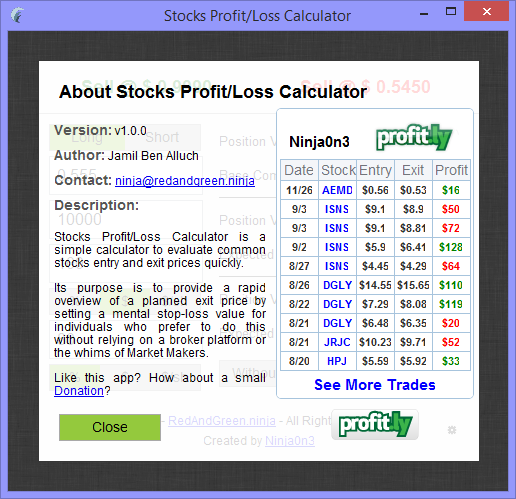
With that being said, the most reliable way to obtain this figure is to assess the average annualized return of your chosen stock market since it was incepted. As noted above, this is because there is no way to be 100% sure what your stock investments will return in your stated period. This is the most difficult variable of our stock market calculator. This will allow you to ride out the ups and downs of the financial markets. As a rule of thumb, you should aim to keep your shares for at least five years. In other words, you won’t be looking to touch any of your shares throughout this period. This is the number of years that you plan to keep your stock investment. Although the total return figure will be displayed in dollars, the figure will be the same for GBP (or whichever currency you opt for). For example, if you plan to invest £1,000 GBP – just enter 1,000 into the box. Note: Although our stock market calculator is denominated in US dollars – you can use it with any currency. For example, if you are planning to invest $5,000 – enter this into the respective box. This is simply the amount that you are planning to invest as a lump sum.

#STOCK PROFIT CALCULATOR SIMPLE HOW TO#
Nevertheless, here’s how to use our stock market calculator. On the contrary, there is no knowing how your stock market investments will perform in the coming years. That is to say, one variable in particular – the rate of return, cannot be predicted with any certainty. If the investor sold it right when the 10-day line crossed under the 20-day line, they would’ve exited their position before a couple of months of an overall downtrend.First and foremost, it is important to note that our stock market calculator should be used with caution.

When the 10-day line first crossed above the 20-day line, an investor who bought the stock would ideally capitalize on a two-month upwards trend. For shorter-term investors, the 10-day and 20-day SMAs are often used as well.Ībove, we are looking at Amazon again with 10-day (purple) and 20-day (green) SMA lines. The most popular moving averages for longer-term investors are the 50-day and 200-day SMAs. Looking at when the lines cross over, it helps certain traders time their trades. The strategy is done by plotting two SMA lines based on two different time frames. SMA crossover strategy is another technical strategy used for entering and closing trades. However, investors must be careful when trying to time the intersections, as the SMA is based on historical information and lags behind real-time data. It may sometimes be a good indicator to sell. However, when the price intersects and falls below the SMA line, we see a downtrend in prices for a bit as well. It is often used as a buy indicator for technical traders. Looking at the graph above, we can see that when the price surpasses the SMA line, the prices often trend upward for some time. To understand it better, let us look at the Amazon example again with the 10-day SMA line. They perform their analysis by looking at when the stock price line intersects the SMA line. Technical traders often use SMAs to time their buy and sell trades. Trading Strategies Using Simple Moving Average 1.

It is once again because the 5-day SMA is a shorter period, which follows the price more closely, whereas the 10-day SMA considers more historical data.

Using a 10-day SMA, we can calculate that at Day 10 (n=10), the 10-day SMA is $14.90. Using a 5-day SMA, we can calculate that at Day 10 (n=10), the 5-day SMA is $18.60. Suppose Company A posted the following closing stock prices: Day (n) It is just the average closing price of a security over the last “n” periods. Since the line represents an average of the previous 200 days’ closing prices, the line is a lot smoother and is not easily influenced by price fluctuations. Since the SMA line was only calculated based on the previous 10 days’ stock price, the line follows price changes a lot more than the 50-day SMA shown in the previous chart.Ībove, a 200-day SMA was used. Even though Amazon reported amazing earnings that hiked its stock price to open at around $2,000, the SMA still stayed relatively similar and only increased by a little bit.Ībove, a 10-day SMA was used. The concept can be observed during the February 2020 earnings announcements. As described above, since SMA is an average of the prices over a specified time period, it does not react as drastically as the actual prices. The 50-day SMA is represented using the purple line, which indicates the overall trend of how the price is moving. The chart above shows how the price of Amazon’s stock (NASDAQ: AMZN) changed over a 1-year period using a 50-day SMA.


 0 kommentar(er)
0 kommentar(er)
